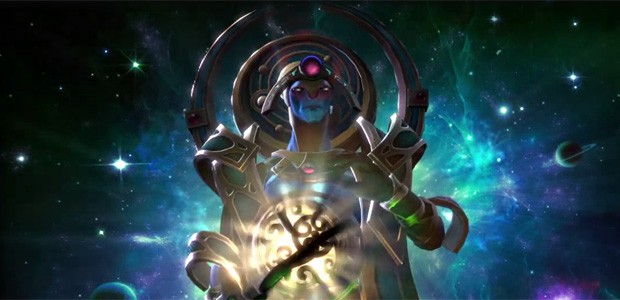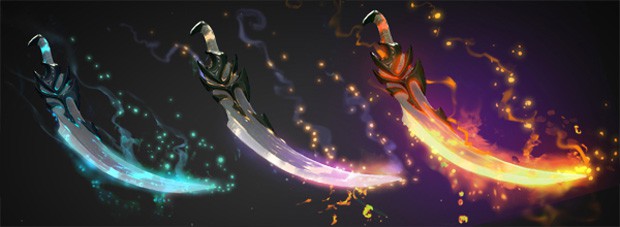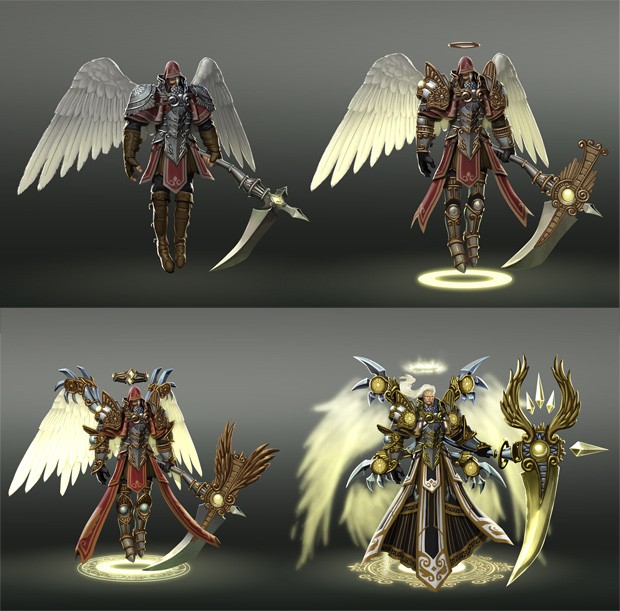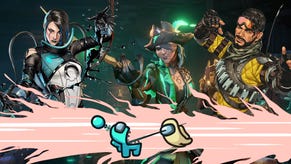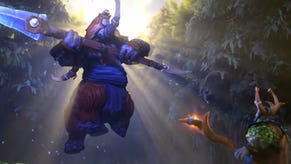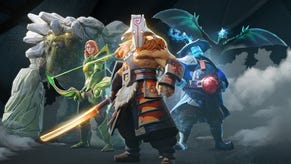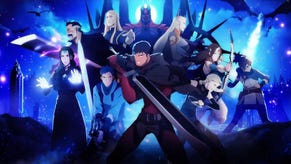Dote Night: Foreseer's Contract And We Need Megawings
So that PA arcana...
Part of a miscellany of serious thoughts, animal gifs, and anecdotage from the realm of MOBAs/hero brawlers/lane-pushers/ARTS/tactical wizard-em-ups. One day Pip might even tell you the story of how she bumped into Na’Vi’s Dendi at a dessert buffet cart.
The current big news in the Dota 2 community is the kerfuffle surrounding the Foreseer's Contract. A short comic heralded the event on Friday and served as an introduction to the newest hero on the roster, Oracle (you can find him in the test client at time of writing but not in the regular game).
Why does the coming update make players - myself included - so concerned?
As per the comic, Oracle sees into different timelines and watches his own deaths, seeing them as warnings rather than definite slayings. To that end he tasks Phantom Assassin with killing his would-be murderers before they have a chance to make good on their plans.
Valve haven't released confirmation of exactly how the event will be implemented and across which game modes but it looks like a Phantom Assassin player will be tasked with killing a particular foe in order to fulfil a contract. Successfully doing so will, in turn, lead to rewards for her or his team. The fulfilment of more and more contracts will evolve Phantom Assassin's weapon.
There are a number of concerns which are feeding into the kerfuffle and you can dig into those over on the Dota 2 subreddit. They mostly revolve around a few key points. One is that the Foreseer's Contract is mentioned on the 'find match' screen for both normal and ranked game modes in the test client.
It's not mentioned in a definite "This mode will have a contract element in it" but it's presence is enough to concern players who worry that matches which affect their MMR could be significantly disrupted by having particular heroes targetted or built with an objective other than winning the overall game in mind. MMR is problematic as a game mode and as a method of self-evaluation anyway, but given so many people put stock in it, you can see why the prospect of making it harder to cohere around a set of game objectives is causing unrest. As an FYI, there's a god in Smite called Kali whose passive works similarly in that it selects a random target and if Kali kills them she gets a health and gold bonus but that's an established part of her skillset rather than something which intrudes on regular play.
Another element I've seen mentioned a lot is pay-to-play. The patch notes for Foreseer's Contract involve an arcana – a fancy item set – for Phantom Assassin called Manifold Paradox. It's a really cool-looking set which adds a bunch of custom effects and animations when you're playing the character. It also costs £20.99 (discounted by 20% until 7 December) and the patch notes have the line: "Purchase this item to initiate the Nemesis Assassin Event in your matches."
Generally Dota 2 events like Diretide, Wraith Night and so on have been free to participate in rather than linked to the purchase of fancy hats. The idea of tying an in-game event to an expensive arcana runs counter to how most players – myself included – think of Dota's monetisation model. I generally define it as a free-to-play affair where all the things you spend money on are purely for cosmetic effect. They don't change the game but they do make me happy for various reasons and that's why I don't begrudge the microtransactions – they feel entirely optional.
There was only one time I can think of prior to this where I was bothered by Dota 2 monetisation and it was with the Immortal Treasures as part of the TI4 Compendium. It wasn't a pay-to-play situation but it was the first time I felt like I was being punished by not spending money. Essentially, you got more Immortal Treasure drops the higher your compendium level. Playing regular games and completing challenges meant levelling slowly and probably not getting all the item drops while buying points meant leveling rapidly and getting everything.
Add the idea of pay-to-play – no matter how the mode ends up being implemented – to the fear that Nemesis Contracts will spoil regular game enjoyment and you can see why the community is on edge about it, anxiously awaiting a detailed explanation from Valve. As for Valve, I'd assume they're keeping a close eye on Reddit to see how the speculation is being greeted and possibly tweaking things in reaction to community feedback.
I appreciate this post has thus far been about concerns – and ones which have yet to be proven, despite how they touch on interesting areas like game purity and monetisation when it comes to MOBAs. That's why I also wanted to talk a little about an aspect which caught my attention more positively and that's the weapon evolution of Manifold Paradox.
As it's billed in the patch notes the blade will evolve and change colour as PA fulfils more and more contracts. There are concerns around that kind of incentivisation but broadly I'm really interested in weapons and character skin evolutions which alter as you play.
It's rooted in an idea I was mulling a little while ago when on a team with someone playing Tiny. Tiny is a rock monster who grows in size as you level up his ultimate. That means when you start the game he's a slightly goofy-looking rock child and by the end he'll be a craggy beefcake. It's an obvious physical manifestation of how well that specific game is going and an indicator of some of your levelling choices. I started thinking about items which denote types of match-specific progress in some way. Perhaps clothing sets which deteriorate over time or with a certain number of kills? That way you could look over at, say, Dragon Knight and tell by his biffed-up shield and scratched-up armour that he'd been in a lot of fights.
With the PA item, it makes sense that Valve want to incentivise their event, but I'd prefer it if the effect was visible to allies as a game progression thing. Plain for the first part of the game then blue animations for level one, purple for two and a fiery orange for three. It would be an aesthetic reward for progress on the part of the player and a legibility function for allies, while opponents could maybe just be treated to a default animation.
I was reminded of it again over the weekend while talking to Stewart Chisam, president of Hi-Rez because, as part of their Smite odyssey (a crowdfunding element linked with their World Championship event). there's an angelic skin for the god Thanatos. Over the course of a match the skin gets more and more extravagant, moving from a basic armored guy with simple white wings to a super-boss killer with the fanciest scythe this side of a music video, shoulder pads so tall they could have an airplane's eye out and translucent megawings.
In short, I really like the idea of battle having an effect on the heroes and changing them in subtle ways. It's aesthetically interesting and adds to the legibility of the game. It also neatly sidesteps a bunch of concerns about incentivising abnormal or atypical gameplay.

